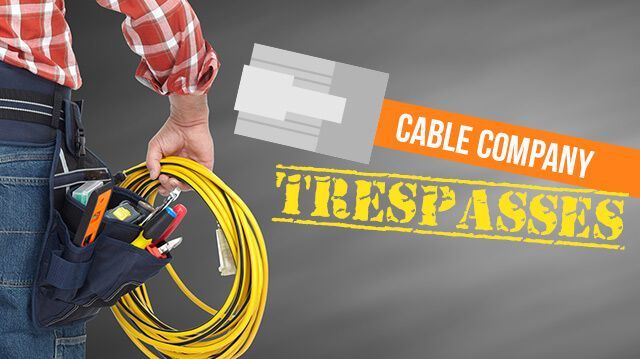
What would you do if you woke up to find your neighbor’s cable line snaking through your backyard? If you’re like most, you’d be angry and then increasingly frustrated at the cable company’s poor workmanship. After one homeowner discovered the cable company had used his backyard to run his neighbor’s cable, he took to social media for help. Here’s what happened.
Cable company takes notice
When homeowner Jacob Fisher discovered that a Time Warner cable technician had run his neighbors Internet cable into his yard, Fisher created a video. Shortly thereafter, that video went viral at more than 2 million views.
In a follow-up video, Jacob discussed how Time Warner escalated his ticket, thanks to all of the comments made on his video through social media, which obviously created negative publicity for the company. Now a technician will be coming back to bury the cable about six inches deep into his yard.
But truth be told this kind of shoddy installation happens often. While Fisher seems to be fine with his neighbor’s cable being buried in his yard, how many people actually would be? What happens if the buried cable interferes with an in-ground pool you’re planning? Before going to war with a neighbor, is there any course of action you can take to avoid this ugly, headache-induced scenario with the cable company?
What’s an easement?
As a homeowner, you might think you own the land around your home — front yard, back yard and driveway — and have final say as to what happens on your property. Unfortunately, that might not be the case. If you review your preliminary title report, you might discover that someone else, such as a neighbor, actually has a right-of-way or an easement through your property.
Some easements are not so obvious and can take a homeowner by surprise. A classic example is one in which a utility company, such as an electric and power company, telephone company or Internet provider, has the right to cross your property to run cables or maintain the utility. In fact, most homes have utility easements running through the yards, both front and back.
If there is an easement, they don’t need your permission to run the cable. If you own property, it is in your best interest to know if any easements exist on your lot. Ask the title company, attorney or your real estate agent to retain all documents pertaining to the original easement. Look them over carefully so that you have a full scope of where the exact location of the easement is and its size. Better to know than be caught off-guard.
How should have it been handled?
Easements really aren’t the issue here, it’s how the utility company maintains the cable and subsequently how the cable company treats a homeowner’s property. The technician should have buried the cable, but many providers contract their work to the lowest-bid installer. A contractor may not care how the cable looks in your backyard because, frankly, he’s not paid enough to care.
For a home installation, most cable technicians would run the wire along the property lines, say cable repair technicians contacted by The Alternative Daily, and only as a temporary hookup. If the area has buried service, then a technician would bury the wire. Or, if the area has aerial service then he would hang the wire, technicians explain.
Local governments issue easements to utility companies. If you find yourself in this situation, your best course of action would be to contact your municipality first — and let the cable company know that you’ll be doing so. Perhaps that may push them to come back faster and correct the situation.
And if that doesn’t work, well, you always have social media.
— Katherine Marko
Sources:
http://www.zillow.com/blog/what-you-should-know-about-easements-and-rights-of-way-76427
http://realestate.findlaw.com/land-use-laws/easement-basics.html
https://www.youtube.com/watch?v=Jd9WfVENajw
https://www.youtube.com/watch?v=JDZMRROhTiw

